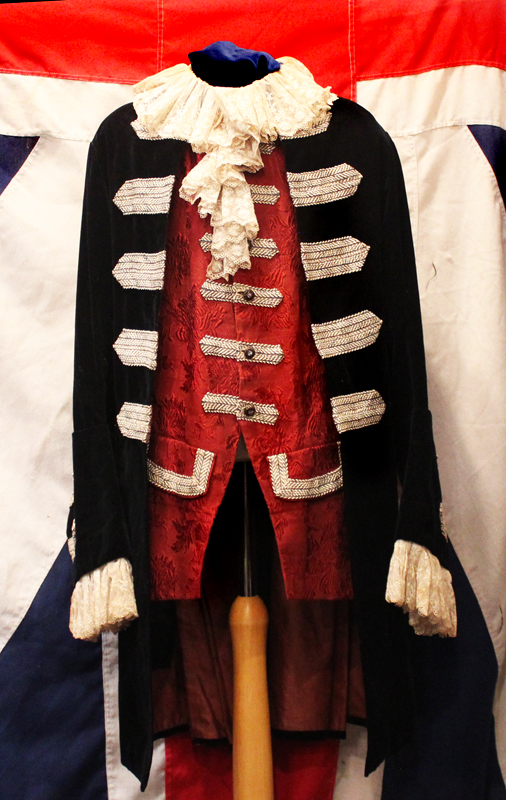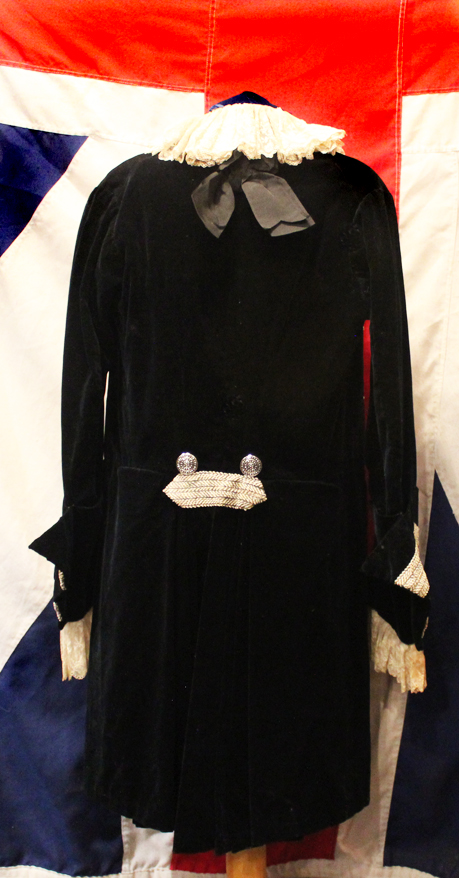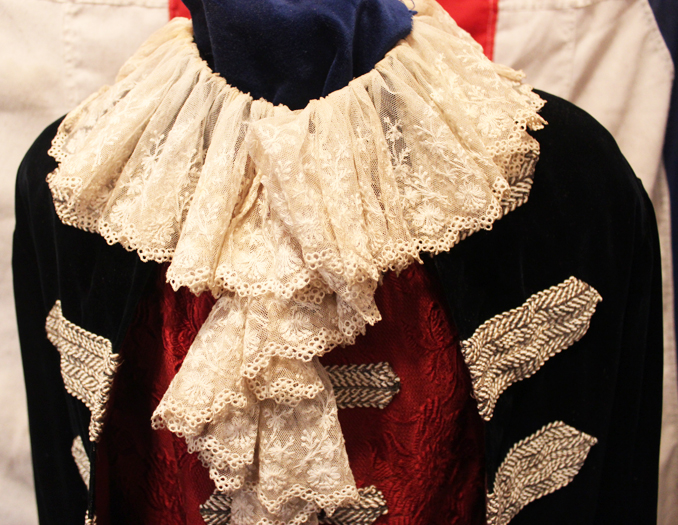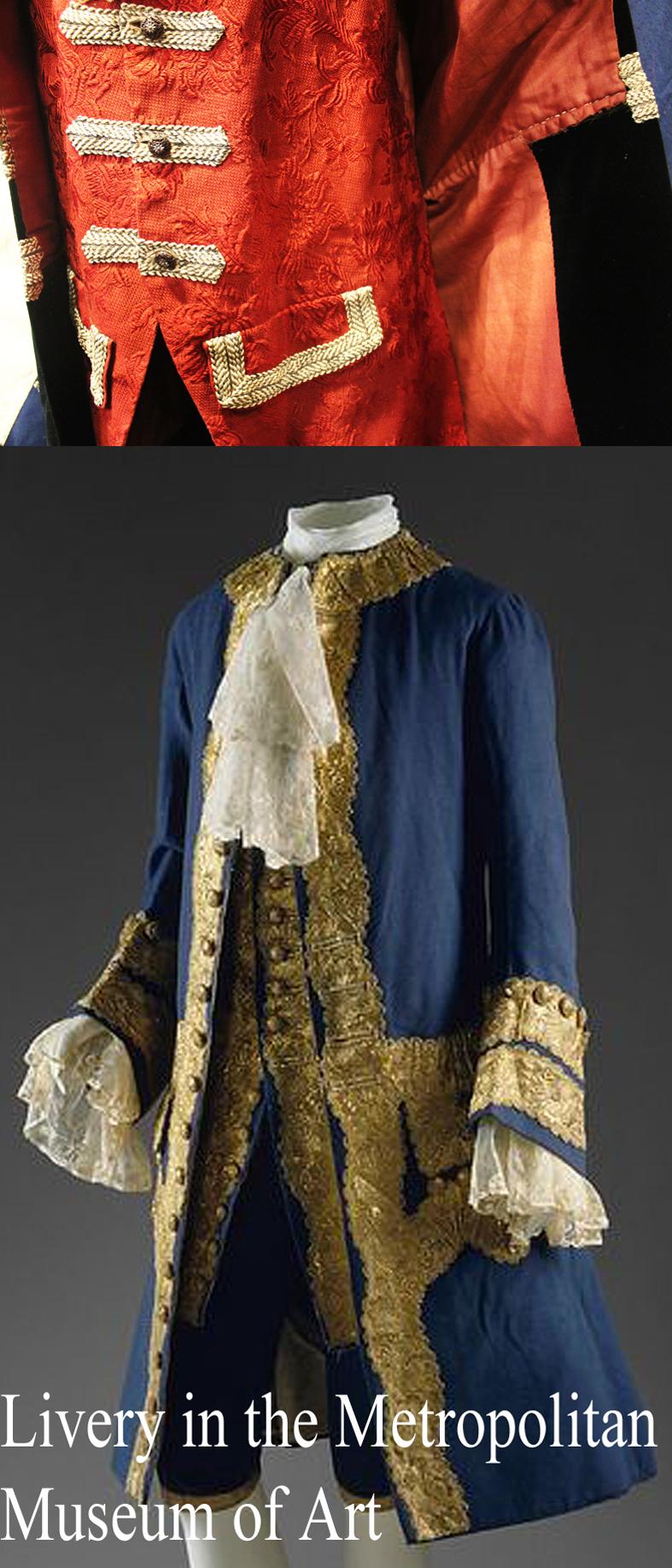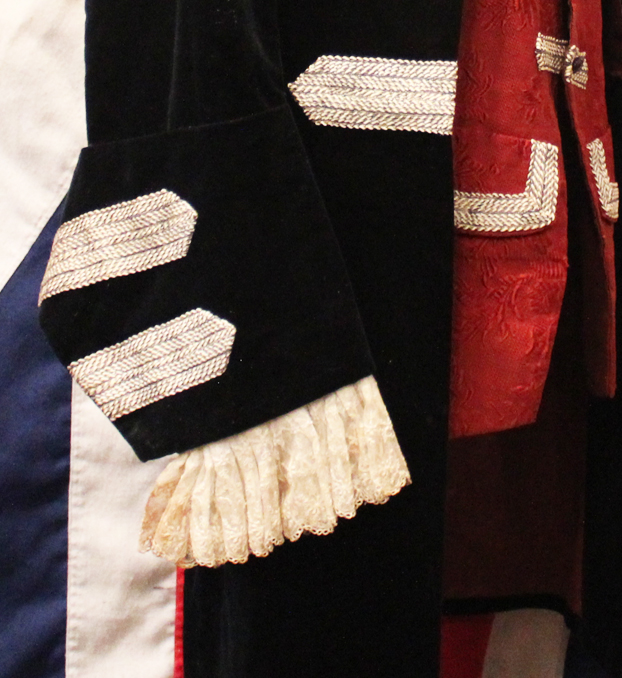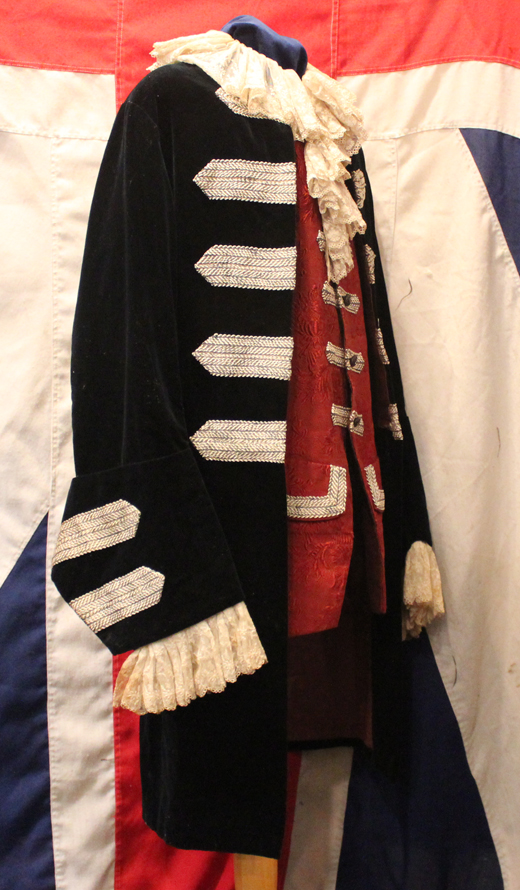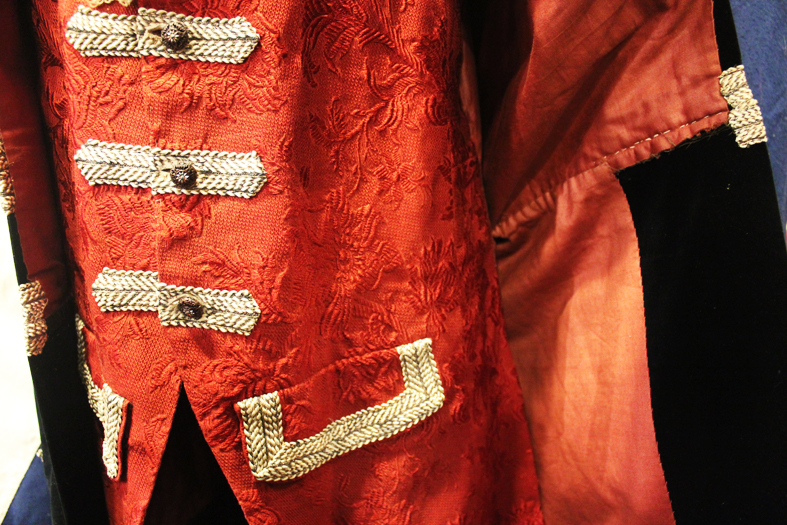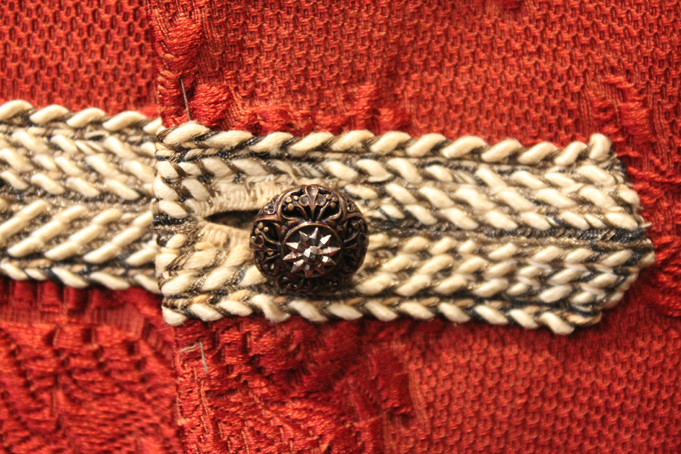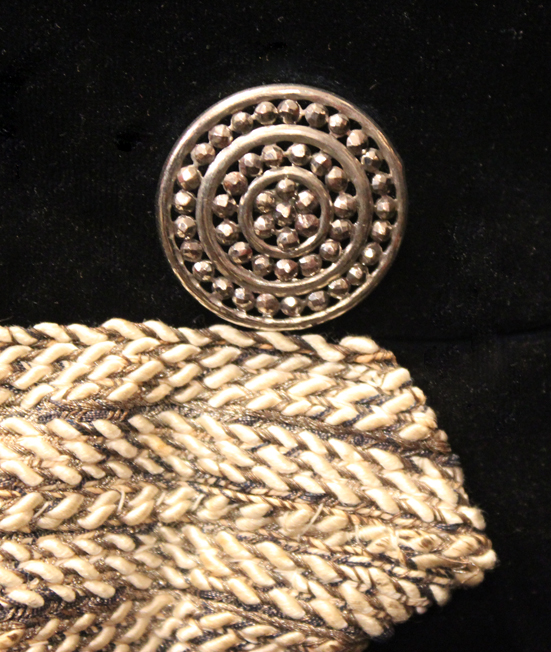A Superb 'Valet de Pied a la Maison' Footman's Livery Frock Coat, in Dark Blue Velvet, Silk Damask, Silver Bullion and Fine Lace, With Handmade Cut-Steel Marquesite Buttonning
Such beautiful examples of the finest and elaborate clothing is considered very much a fabulous piece of object d'art, with museum collections displaying many such surviving pieces of now long gone finery with much attention to the their fine detail, their craftsmanship, tailoring and beauty. In stunning condition. Any well considered location for such a stunning piece could only be improved by such an admirable piece. A 19th century form footman’s livery frock coat, the dark blue velvet coat with five pairs of re-made 2” wide silver braided bands to front and similar double braided bands to flared pointed cuffs, reverse of coat pleated and cut to waist with banded tie and two large, pierced, cut handmade steel marquesite buttons. Black bow at rear of neck, collar and cuffs have finely worked white lace with matching cravat. The fine quality burgundy coloured damask waistcoat with floral and foliate worked decoration and six 1” wide braided silver bands en suite with coat. A false pocket flap on each side similarly trimmed with braid. Six dark metal waistcoat buttons of floral openwork design have star marquesite button centres. The whole in very good condition due to perfect storage. Male servants were paid more than female servants (because they were expected to support a wife and children) and footmen were something of a luxury and therefore a status symbol even among the servant-employing classes. They performed a less essential role than the cook, maid or even butler, and were part only of the grandest households. Since a footman was for show as much as for use, a tall footman was more highly prized than a short one, and good looks, including well-turned legs, which were shown off by the traditional footman's dress of stockings worn below knee breeches, were an advantage. Footmen were expected to be unmarried and tended to be relatively young; they might, however, progress to other posts, notably that of butler. One 19th-century footman, William Tayler, kept a diary which has been published. He was, in fact, married; but kept his marriage secret from his employers and visited his family only on his days off.
Once a commonly employed servant in great houses, footmen became much rarer after World War I as fewer households could by then afford retinues of servants and retainers. The position is now virtually a historic one although servants with this designation are still employed in the British Royal Household, wearing a distinctive scarlet livery on state occasions.The first footman was the designation given to the highest-ranking servant of this class in a given household. The first footman would serve as deputy butler and act as butler in the latter's absence, although some larger houses also had an under-butler above the first footman.
In a larger household, various footmen might be assigned specific duties (for which there might be a traditional sequence), such as the silver specialist. Usually the footmen performed a range of duties which included serving meals, opening and closing doors, carrying heavy items, or moving furniture for the housemaid to clean behind. The footmen might also double as valets, especially for visiting guests. As with all 19th century form clothing it is a small size.
Code: 20940
1475.00 GBP

